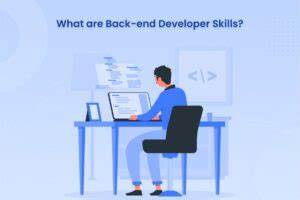In today’s data-driven world, businesses are increasingly relying on data analysis to drive decision-making and gain a competitive advantage. At the forefront of this revolution is the role of a business intelligence developer. A epic business intelligence developer is responsible for designing and implementing data analysis solutions that transform raw data into valuable insights. They play a crucial role in helping businesses make informed decisions, identify trends and patterns, and drive business growth.
To excel in this role, a epic business intelligence developer needs to have a strong understanding of data analytics, data modeling, and visualization techniques. They also need to be proficient in using various tools and technologies that enable them to collect, clean, analyze, and visualize data. In addition, having a solid understanding of business processes and industry knowledge is essential for a business intelligence developer to effectively translate data into actionable insights.
Contents
- 1 Key Skills and Qualifications for a Business Intelligence Developer
- 2 Understanding Data Analysis and Its Importance in Business Decision-Making
- 3 Steps to Becoming a Successful Business Intelligence Developer
- 4 Step 1: Gain a Strong Foundation in Data Analytics
- 5 Step 2: Master Data Visualization Tools
- 6 Step 3: Develop Database Management Skills
- 7 Step 4: Learn Data Modeling Techniques
- 8 Step 5: Gain Industry Knowledge
- 9 Step 6: Stay Updated with the Latest Trends and Technologies
- 10 Tools and Technologies Used in Data Analysis and Business Intelligence
- 11 1. Data Visualization Tools
- 12 2. Statistical Analysis Tools
- 13 3. Database Management Systems (DBMS)
- 14 4. Data Integration Tools
- 15 5. Machine Learning and Predictive Analytics Tools
- 16 Best Practices for Data Analysis and Visualization
- 17 1. Define Clear Objectives
- 18 2. Cleanse and Prepare Data
- 19 3. Use Appropriate Visualizations
- 20 4. Keep It Simple and Clear
- 21 5. Tailor Insights to the Audience
- 22 6. Continuously Learn and Improve
Key Skills and Qualifications for a Business Intelligence Developer
To become a successful business intelligence developer, there are certain key skills and qualifications that you need to possess. First and foremost, a strong foundation in data analytics is essential. This includes knowledge of statistical analysis, data mining, and data modeling techniques. You should be able to understand and manipulate data, uncover patterns and trends, and draw meaningful insights from it.
In addition to data analytics skills, proficiency in data visualization tools is crucial. As a business intelligence developer, you need to be able to present data in a visually appealing and easily understandable format. This requires knowledge of tools such as Tableau, Power BI, or QlikView, which enable you to create interactive and engaging visualizations that effectively communicate insights to stakeholders.
Furthermore, a business intelligence developer should have a solid understanding of database management systems (DBMS) and SQL. This knowledge allows you to extract, manipulate, and analyze data from databases efficiently. It also helps you in designing and implementing data models that accurately represent the business’s data and enable effective analysis.
Understanding Data Analysis and Its Importance in Business Decision-Making
Data analysis plays a pivotal role in modern business decision-making. By analyzing and interpreting data, businesses can gain valuable insights that drive strategic decision-making and improve overall performance. Data analysis helps businesses identify trends, patterns, and correlations, enabling them to make informed decisions and take appropriate actions.
One of the primary goals of data analysis is to uncover actionable insights from the vast amounts of data generated by businesses. These insights can be used to identify areas for improvement, optimize processes, and identify new business opportunities. For example, by analyzing customer data, businesses can identify their target customers, understand their preferences, and tailor their marketing strategies accordingly.
Data analysis also helps in measuring and tracking key performance indicators (KPIs). By regularly analyzing KPIs, businesses can assess their performance, identify areas of improvement, and monitor progress towards their goals. This enables them to make data-driven decisions that drive business growth and profitability.
In summary, data analysis is crucial for businesses as it provides valuable insights that drive decision-making, improve performance, and identify new opportunities. A senior business intelligence developer plays a critical role in this process by designing and implementing data analysis solutions that transform raw data into actionable insights.
Steps to Becoming a Successful Business Intelligence Developer
Becoming a successful business intelligence developer requires a combination of technical skills, industry knowledge, and a passion for data analysis. Here are the key steps you need to take to embark on this exciting career path.
Step 1: Gain a Strong Foundation in Data Analytics
To become proficient in data analysis, it is essential to gain a strong foundation in data analytics. Start by learning the basics of statistics and data manipulation techniques. Understand concepts such as probability, hypothesis testing, and regression analysis. Familiarize yourself with programming languages commonly used in data analysis, such as Python or R.
Step 2: Master Data Visualization Tools
Data visualization is a crucial aspect of business intelligence. To effectively communicate insights, you need to master data visualization tools such as Tableau, Power BI, or QlikView. These tools allow you to create interactive and visually appealing dashboards and reports that effectively convey insights to stakeholders.
Step 3: Develop Database Management Skills
A solid understanding of database management systems (DBMS) and SQL is essential for a business intelligence developer. Learn how to design and implement databases, write complex queries, and optimize data retrieval. Familiarize yourself with different types of databases, such as relational and NoSQL databases, and understand their strengths and limitations.
Step 4: Learn Data Modeling Techniques
Data modeling is an essential skill for a business intelligence developer. It involves designing data models that accurately represent the business’s data and enable effective analysis. Learn different data modeling techniques such as entity-relationship modeling or dimensional modeling. Understand how to translate business requirements into a data model and design databases that support efficient data analysis.
Step 5: Gain Industry Knowledge
To effectively analyze data and provide meaningful insights, it is crucial to have a solid understanding of the industry you are working in. Familiarize yourself with the business processes, key performance indicators, and challenges specific to your industry. This knowledge will enable you to ask the right questions, identify relevant data sources, and provide insights that are actionable and relevant to the business.
Step 6: Stay Updated with the Latest Trends and Technologies
The field of business intelligence is constantly evolving, with new tools and technologies being introduced regularly. Stay updated with the latest trends and developments in the field. Attend conferences, webinars, and workshops to learn about new tools, techniques, and best practices. Engage with the data analysis community through online forums and social media to stay connected and learn from industry experts.
By following these steps and continuously honing your skills, you can become a successful business intelligence developer and make a significant impact in the business world. The demand for skilled professionals in this field is high, and by mastering the essential skills and staying updated with the latest trends, you can unlock the power of data analysis and drive business growth.
Tools and Technologies Used in Data Analysis and Business Intelligence
To excel as a business intelligence developer, it is essential to be proficient in using various tools and technologies that facilitate data analysis and business intelligence. Here are some of the key tools and technologies commonly used in the field.
1. Data Visualization Tools
Data visualization tools such as Tableau, Power BI, and QlikView are essential for creating visually appealing and interactive dashboards and reports. These tools enable you to transform raw data into meaningful visualizations that effectively communicate insights to stakeholders. They provide a wide range of features and options for customizing visualizations, allowing you to create engaging and impactful presentations.
2. Statistical Analysis Tools
Statistical analysis tools such as Python and R are widely used in data analysis. These programming languages provide a rich set of libraries and packages for statistical analysis, data manipulation, and visualization. They allow you to perform advanced statistical analysis, build predictive models, and conduct hypothesis testing. Python and R are highly versatile and widely adopted in the data analysis community.
3. Database Management Systems (DBMS)
Database management systems such as MySQL, Oracle, or Microsoft SQL Server are used for storing and managing large volumes of data. These systems provide a structured and organized approach to data storage and retrieval. A business intelligence developer needs to be proficient in using DBMS and SQL to extract, manipulate, and analyze data efficiently. Understanding the different types of databases and their strengths and limitations is crucial for designing effective data models.
4. Data Integration Tools
Data integration tools such as Informatica or Talend are used to extract, transform, and load (ETL) data from various sources into a data warehouse or a data mart. These tools enable you to consolidate data from multiple sources, cleanse and transform it, and load it into a central repository for analysis. Data integration is a critical step in the data analysis process, and proficiency in using ETL tools is essential for a epic business intelligence developer.
5. Machine Learning and Predictive Analytics Tools
Machine learning and predictive analytics are increasingly being used in business intelligence to identify patterns, make predictions, and automate decision-making processes. Tools such as TensorFlow, Scikit-learn, or Azure Machine Learning provide a wide range of algorithms and models for building predictive models. Proficiency in using these tools allows a epic business intelligence developer to leverage the power of machine learning to uncover hidden insights and drive business growth.
By mastering these tools and technologies, a epic business intelligence developer can effectively collect, clean, analyze, and visualize data, transforming it into valuable insights that drive business decision-making.
Best Practices for Data Analysis and Visualization
To become an epic business intelligence developer, it is essential to follow best practices for data analysis and visualization. Here are some key practices that can help you maximize the effectiveness of your data analysis efforts.
1. Define Clear Objectives
Before starting any data analysis project, it is crucial to define clear objectives. Identify the questions you want to answer or the problems you want to solve. This will help you focus your analysis and ensure that you are providing insights that are relevant to the business.
2. Cleanse and Prepare Data
Data cleansing and preparation are critical steps in the data analysis process. Ensure that your data is accurate, complete, and free from errors or inconsistencies. Remove duplicate records, handle missing values, and standardize data formats. This will ensure that your analysis is based on reliable and consistent data.
3. Use Appropriate Visualizations
Selecting the right visualizations is essential for effectively communicating insights. Choose visualizations that best represent the data and convey the intended message. Use appropriate charts, graphs, or maps that highlight the key findings and make it easy for stakeholders to understand the insights.
4. Keep It Simple and Clear
When presenting data analysis results, it is important to keep it simple and clear. Avoid cluttering visualizations with unnecessary details or overwhelming stakeholders with complex analyses. Use clear and concise language to explain the insights and provide context to the findings.
5. Tailor Insights to the Audience
Different stakeholders have different levels of understanding and requirements. Tailor your insights to the audience by presenting information that is relevant and meaningful to them. Use language and visualizations that resonate with the stakeholders and help them make informed decisions.
6. Continuously Learn and Improve
Data analysis is a continuous learning process. Stay updated with the latest techniques, tools, and best practices in the field. Seek feedback from stakeholders and learn from their insights. Continuously improve your skills and strive for excellence in your data analysis efforts.
By following these best practices, you can ensure that your data analysis and visualization efforts are effective, impactful, and drive meaningful insights for the business.
Becoming an epic business intelligence developer requires a combination of technical skills, industry knowledge, and a passion for data analysis. By mastering the essential skills, staying updated with the latest trends and technologies, and following best practices, you can unlock the power of data analysis and make a significant impact in the business world. So, embark on this exciting career path, and let the data guide you towards success.



